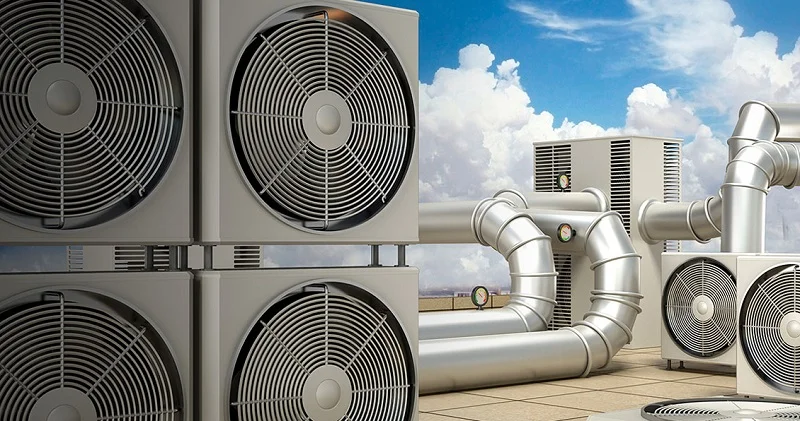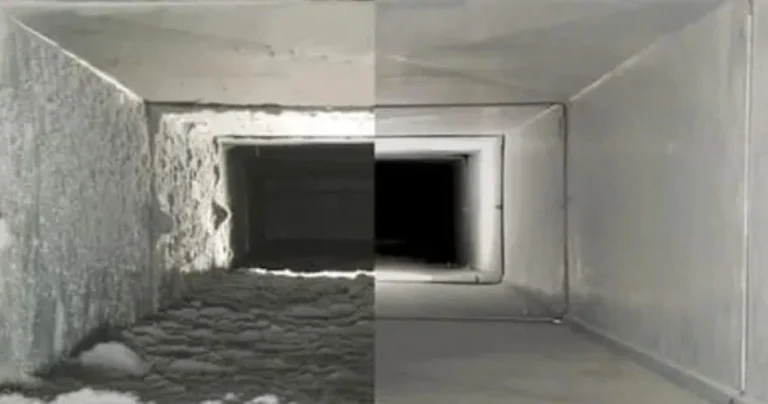HVAC System Efficiency: How Clean Ducts Save Money and Energy

Staring at another sky-high utility bill and wondering where all your money’s going? You’re cranking the thermostat, but your house still feels like an icebox in winter and a sauna in summer. Meanwhile, your HVAC system’s running constantly, making weird noises, and you’re changing air filters more often than your neighbor changes their oil. Sound familiar?
Here’s what most homeowners don’t realize: those dirty ducts hidden behind your walls are silently sabotaging your comfort and draining your wallet. Clean ductwork can slash your energy bills by 15-40%, extend your HVAC equipment’s lifespan by years, and finally give you the consistent temperatures you’ve been paying for all along. The difference between clean and dirty ducts isn’t just about air quality – it’s about cold, hard cash staying in your pocket.
What Makes Ductwork So Critical to Your HVAC System?
Think of your ductwork as the circulatory system of your home – when arteries get clogged, the heart works harder, and the whole body suffers. Your HVAC system operates on the same principle, moving conditioned air through a network of ducts to maintain comfortable temperatures throughout your living space.
Clean ducts allow unrestricted airflow, which means your heating and cooling equipment can distribute air efficiently to every room. When ducts accumulate dust, debris, pet hair, and other contaminants, they create resistance that forces your system to work overtime. This isn’t just an inconvenience – it’s a mechanical stress that affects everything from your monthly energy costs to the longevity of expensive HVAC components.
Most homeowners focus on replacing air filters and scheduling annual tune-ups but completely overlook the miles of ductwork that actually deliver the conditioned air. Professional duct cleaning addresses the root cause of many HVAC efficiency problems that surface-level maintenance simply can’t touch.
The Hidden Energy Drain: How Dirty Ducts Impact Your Bills
Increased System Runtime
Dirty ducts force your HVAC system to run 20-30% longer to reach the same temperature settings, and that extra runtime shows up directly on your utility bill. When dust and debris restrict airflow, your system struggles to move the volume of air needed to heat or cool your home effectively.
The Department of Energy estimates that improved ductwork efficiency can reduce energy consumption by up to 20% in typical homes. For a household spending $200 monthly on heating and cooling, that translates to $480 in annual savings – enough to pay for professional duct cleaning and still pocket hundreds of dollars.
Reduced Heat Transfer Efficiency
Buildup inside ducts doesn’t just block airflow – it also acts as insulation that prevents proper heat transfer. Dust accumulation on duct surfaces reduces the system’s ability to maintain desired temperatures, causing longer heating and cooling cycles that consume more energy than necessary.
Pressure Imbalances Throughout the Home
Restricted airflow creates pressure imbalances that make some rooms too hot while others remain cold, leading to constant thermostat adjustments. This temperature inconsistency forces homeowners to set more extreme temperatures to compensate, driving up energy consumption across the entire system.
HVAC Equipment Longevity: The Real Cost of Neglect
Premature Component Failure
Extended system runtime due to dirty ducts accelerates wear on critical HVAC components like compressors, heat exchangers, and blower motors. These parts are designed to operate within specific parameters, and when forced to work harder due to airflow restrictions, they fail years earlier than their expected lifespan.
The average HVAC system costs $5,000-$8,000 to replace, making equipment protection through regular duct maintenance one of the most cost-effective investments a homeowner can make. Professional Residential duct cleaning typically costs $300-$500 but can extend equipment life by 3-5 years.
Reduced Warranty Coverage
Many HVAC manufacturers require proof of regular maintenance to honor warranty claims, and neglected ductwork can void equipment warranties even when other maintenance has been performed. Clean ducts demonstrate proper system care that protects your investment in expensive heating and cooling equipment.
Increased Repair Frequency
Dirty ducts contribute to more frequent service calls as systems struggle with reduced efficiency, overheating issues, and component stress. The accumulated cost of repairs over time often exceeds the investment in preventive duct cleaning by a significant margin.
Airflow Optimization: The Science Behind Efficiency
Static Pressure and System Performance
HVAC systems are designed to operate within specific static pressure ranges, and dirty ducts increase resistance that pushes systems beyond optimal parameters. When static pressure rises due to ductwork restrictions, the entire system becomes less efficient at moving conditioned air throughout the home.
Professional airflow measurement before and after duct cleaning often reveals dramatic improvements in system performance that translate directly to lower operating costs and better comfort control.
Distribution Balance
Clean ducts ensure proper air distribution to all areas of the home, eliminating hot and cold spots that force occupants to adjust thermostats constantly. Balanced airflow means your HVAC system can maintain consistent temperatures without overworking to compensate for poor distribution.
Return Air Quality
Return air ducts collect airborne particles that get recirculated through the system, and when these ducts are dirty, contaminated air continuously flows through your equipment. Clean return ducts protect internal components from debris accumulation while ensuring efficient air processing.
Smart Home Integration and Clean Ducts
Smart Thermostat Performance
Smart thermostats rely on accurate temperature readings and efficient airflow to optimize heating and cooling schedules, but dirty ducts interfere with these systems by creating temperature inconsistencies and extended runtime requirements. When ducts are clean, smart thermostats can accurately detect when target temperatures are reached and cycle equipment more efficiently.
Modern programmable thermostats with learning algorithms perform better with clean ductwork because they can establish more predictable patterns for heating and cooling cycles. This improved predictability leads to better energy management and lower utility costs over time.
Zone Control Systems
Multi-zone HVAC systems depend heavily on proper airflow distribution through clean ductwork to function as designed. When ducts are restricted, zone dampers can’t effectively control temperature in different areas, undermining the efficiency benefits that motivated the zone system investment.
Seasonal Considerations for Duct Maintenance
Pre-Season System Preparation
Scheduling duct cleaning before peak heating or cooling seasons ensures optimal system performance when energy demands are highest. Spring and fall cleaning allows homeowners to address any airflow issues before weather extremes put maximum stress on HVAC equipment.
Filter Performance After Cleaning
Clean ducts significantly improve air filter effectiveness by reducing the total particle load in the system and allowing filters to capture contaminants more efficiently. Many homeowners notice longer intervals between filter changes after professional duct cleaning, providing additional cost savings beyond energy bill reductions.
Professional vs. DIY: Making the Right Investment
What Professional Cleaning Achieves
Professional duct cleaning equipment can generate negative pressure and airflow that household vacuum cleaners simply cannot match, ensuring thorough removal of accumulated debris throughout the entire duct system. Certified technicians also inspect ductwork for damage, leaks, or other issues that impact efficiency.
Long-term ROI Analysis
The investment in professional duct cleaning typically pays for itself within 12-18 months through reduced energy costs, extended equipment life, and fewer repair calls. When you factor in improved indoor comfort and air quality, the return on investment becomes even more compelling for most homeowners.
Professional cleaning also provides documentation of system maintenance that supports warranty claims and demonstrates property care for resale value considerations.
Taking Action: Your Next Steps
Clean ducts aren’t a luxury – they’re essential infrastructure that directly impacts your family’s comfort and your household budget. The combination of lower energy bills, extended equipment life, and improved system performance makes duct cleaning one of the most cost-effective home maintenance investments available.
Contact a certified HVAC professional to assess your ductwork and develop a maintenance schedule that protects your investment while keeping more money in your pocket. Your utility bills – and your comfort – will thank you for taking action now rather than waiting for problems to compound.


